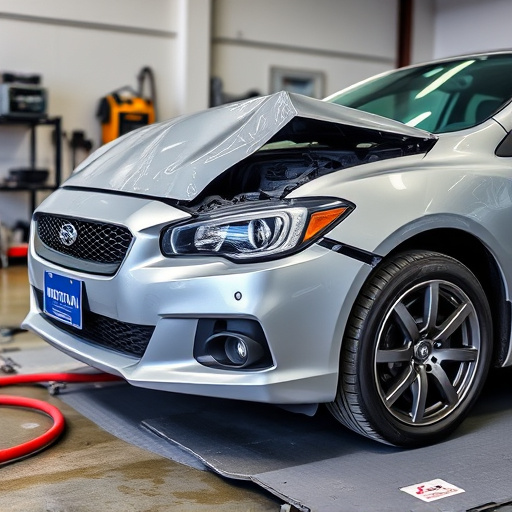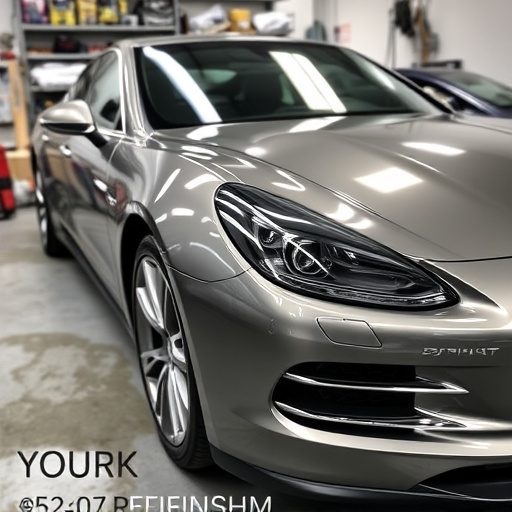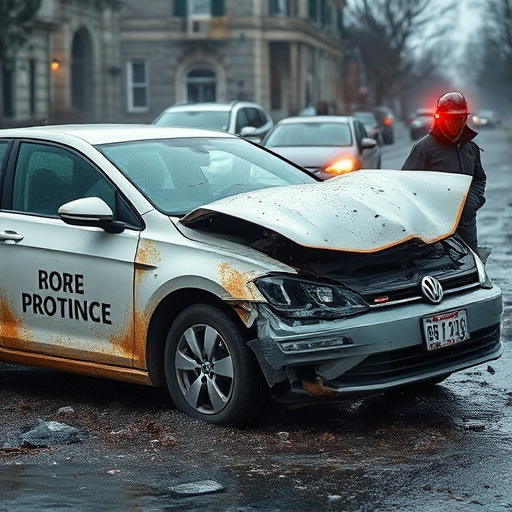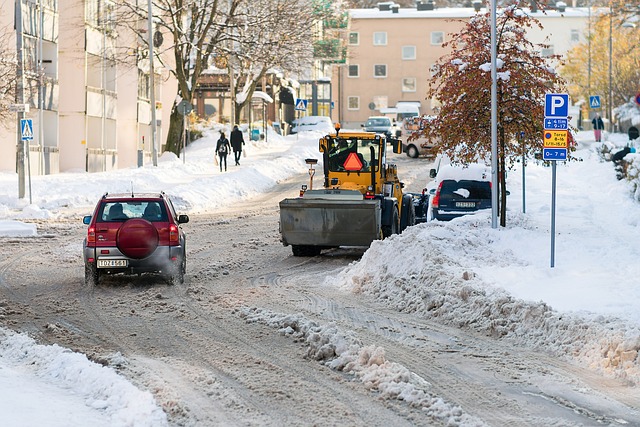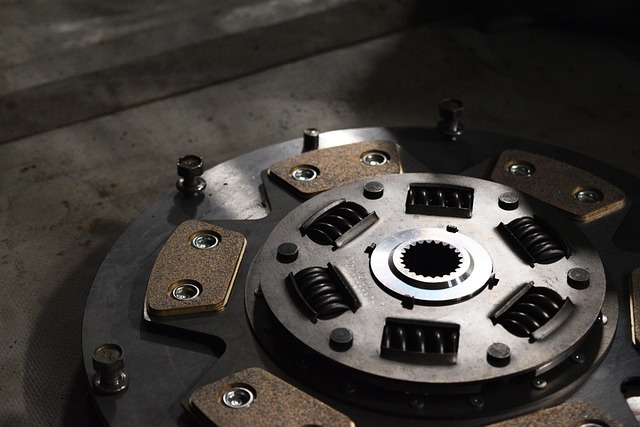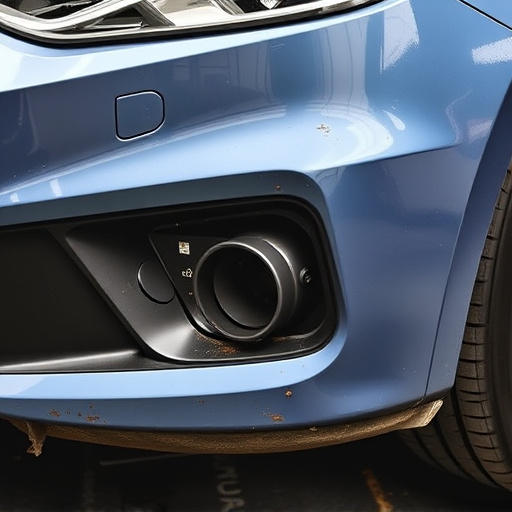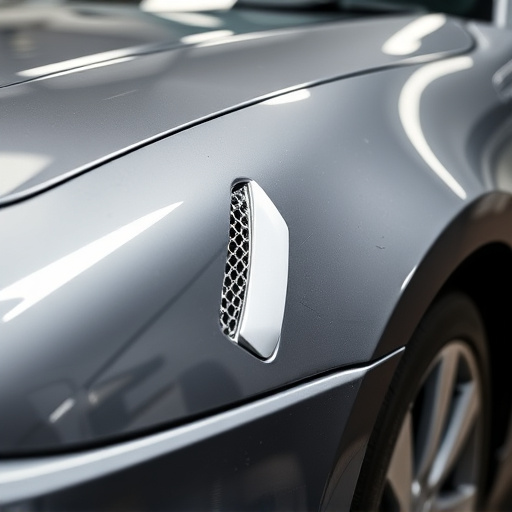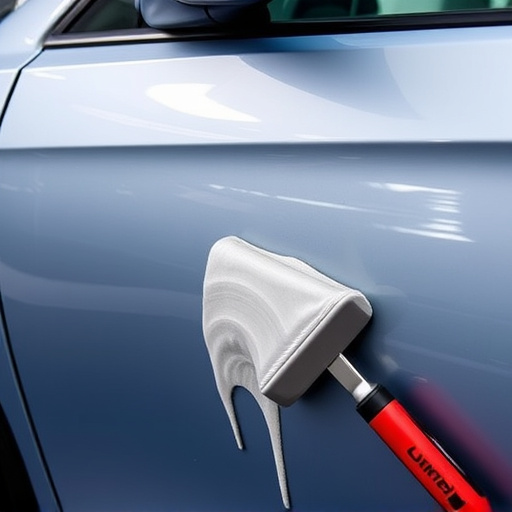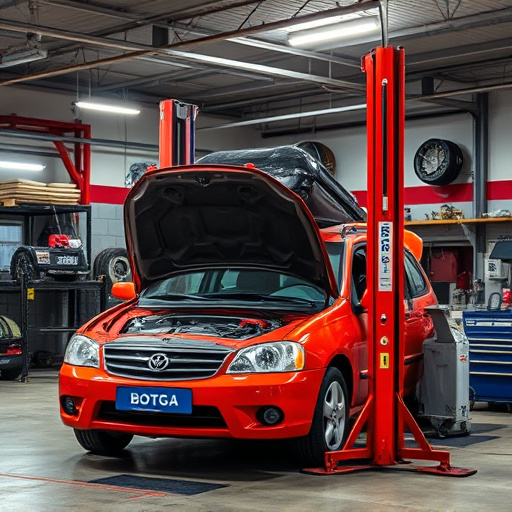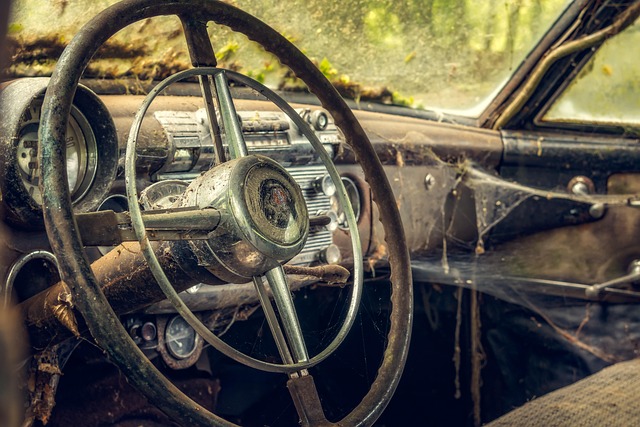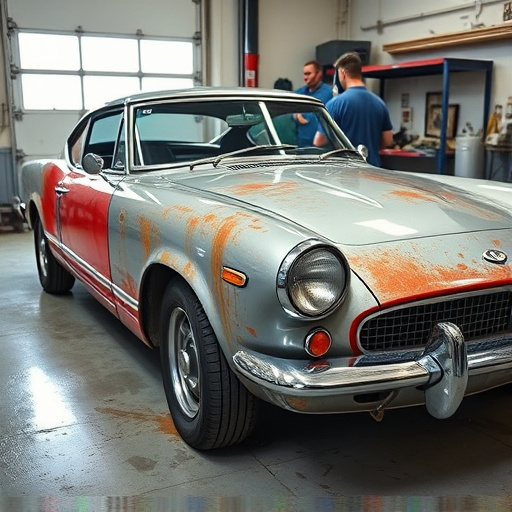Quality collision repair involves meticulous inspection, advanced diagnostic tools, and skilled technicians using precision techniques and state-of-the-art equipment to restore vehicles to original condition. Shops employ diverse advanced materials, from specialized paints to CAD systems, focusing on both visual aesthetics and structural integrity. Customer satisfaction, driven by clear communication and excellent service in specific areas like dent repair and auto painting, is key to a shop's success in the competitive quality collision repair landscape.
In the realm of automotive care, quality collision repair stands as a cornerstone of safety and vehicle longevity. This comprehensive guide delves into the intricate process, highlighting essential steps from initial assessment to final restoration. From materials and advanced techniques ensuring optimal results to fostering customer satisfaction, we explore every facet of this meticulous art. Uncover the secrets behind top-tier collision repair, leaving your vehicle not just fixed but meticulously restored.
- The Essential Steps of Quality Collision Repair
- Materials and Techniques for Optimal Results
- Ensuring Customer Satisfaction in the Repair Process
The Essential Steps of Quality Collision Repair

The process of quality collision repair involves several critical steps that ensure a seamless and structurally sound restoration. It begins with a thorough inspection to assess the extent of damage, involving both visual examination and advanced diagnostic tools for accurate measurements. This initial phase is crucial in determining the scope of work required for autobody repairs, ensuring every detail is accounted for.
Once the evaluation is complete, skilled technicians employ precision tools and techniques tailored to the specific type of vehicle and damage. From removing damaged panels to replacing parts or performing classic car restoration, each step demands meticulous care. The body shop’s environment must be controlled, utilizing state-of-the-art equipment to ensure precise alignment and paintwork. This meticulous approach guarantees that every repair, from minor dents to complex crumple zones, is handled with the utmost care, resulting in a vehicle that not only looks but also drives like new.
Materials and Techniques for Optimal Results
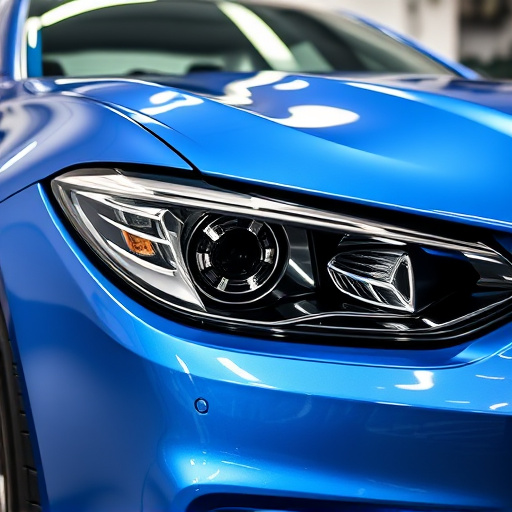
In quality collision repair, selecting the right materials and employing advanced techniques are paramount to achieving optimal results. Modern automotive repair shops leverage a diverse range of high-quality materials, from specialized paints that mimic vehicle finishes precisely to cutting-edge adhesives designed for superior bond strength. For instance, dent repair often involves using precision tools to remove dents without damaging the surrounding vehicle bodywork.
The art of collision repair also extends to innovative techniques that ensure precision and longevity. These include computer-aided design (CAD) systems for measuring and replacing damaged components, as well as robotic welding for consistent, accurate results. Additionally, advanced sandblasting techniques prepare surfaces for painting, while eco-friendly coatings and finishes contribute to both aesthetics and vehicle protection. Each step in the process is meticulously executed to restore not just the physical appearance but also the structural integrity of the vehicle, reflecting the commitment to quality collision repair.
Ensuring Customer Satisfaction in the Repair Process

In the realm of quality collision repair, customer satisfaction is paramount. It begins with effective communication and ends with a fully restored vehicle that meets or exceeds expectations. Throughout the process, auto body shops should foster an environment of transparency, keeping customers informed at every stage, from initial assessment to final inspection. This includes explaining the scope of work, providing accurate time estimates, and addressing any concerns promptly. A satisfied customer is more likely to become a returning client and advocate for the shop, enhancing its reputation in the competitive market of auto body services.
Delving into specific services like vehicle dent repair and auto painting, shops should ensure precision and attention to detail. Skilled technicians use advanced techniques and high-quality materials to correct dents and restore paint jobs to their original condition. This commitment to excellence not only guarantees customer satisfaction but also ensures the safety and reliability of the repaired vehicle. In the end, a satisfied customer is the best advertisement for any auto body shop, contributing to its success in the industry.
In understanding the process of quality collision repair, from essential steps to advanced materials and techniques, it’s clear that customer satisfaction is paramount. By prioritizing transparent communication, utilizing state-of-the-art equipment, and adhering to rigorous standards, collision repair professionals can restore vehicles to their pre-accident condition, ensuring peace of mind for all involved. This comprehensive approach to quality collision repair not only protects the investment of vehicle owners but also contributes to a safer, more reliable driving environment.

